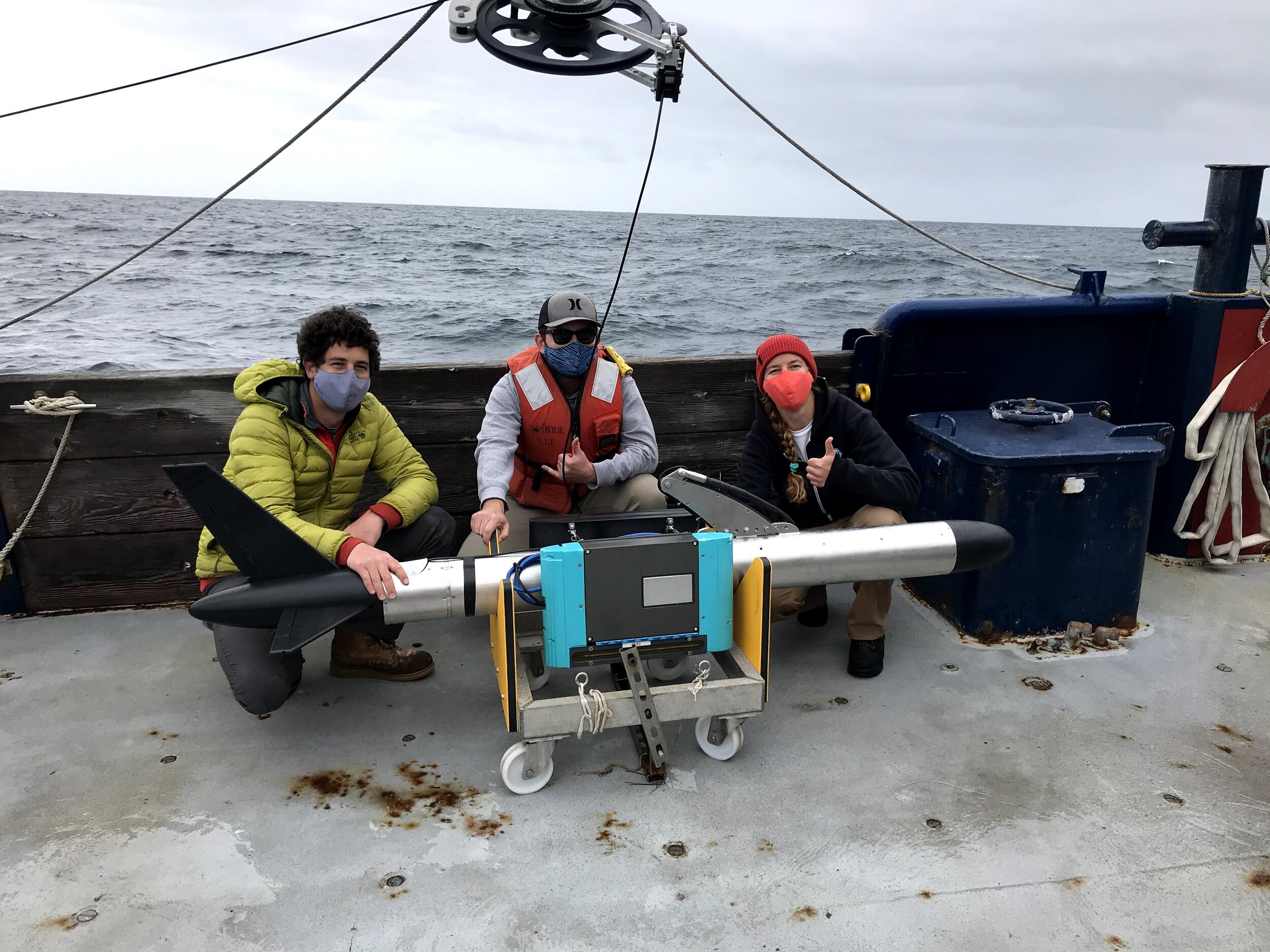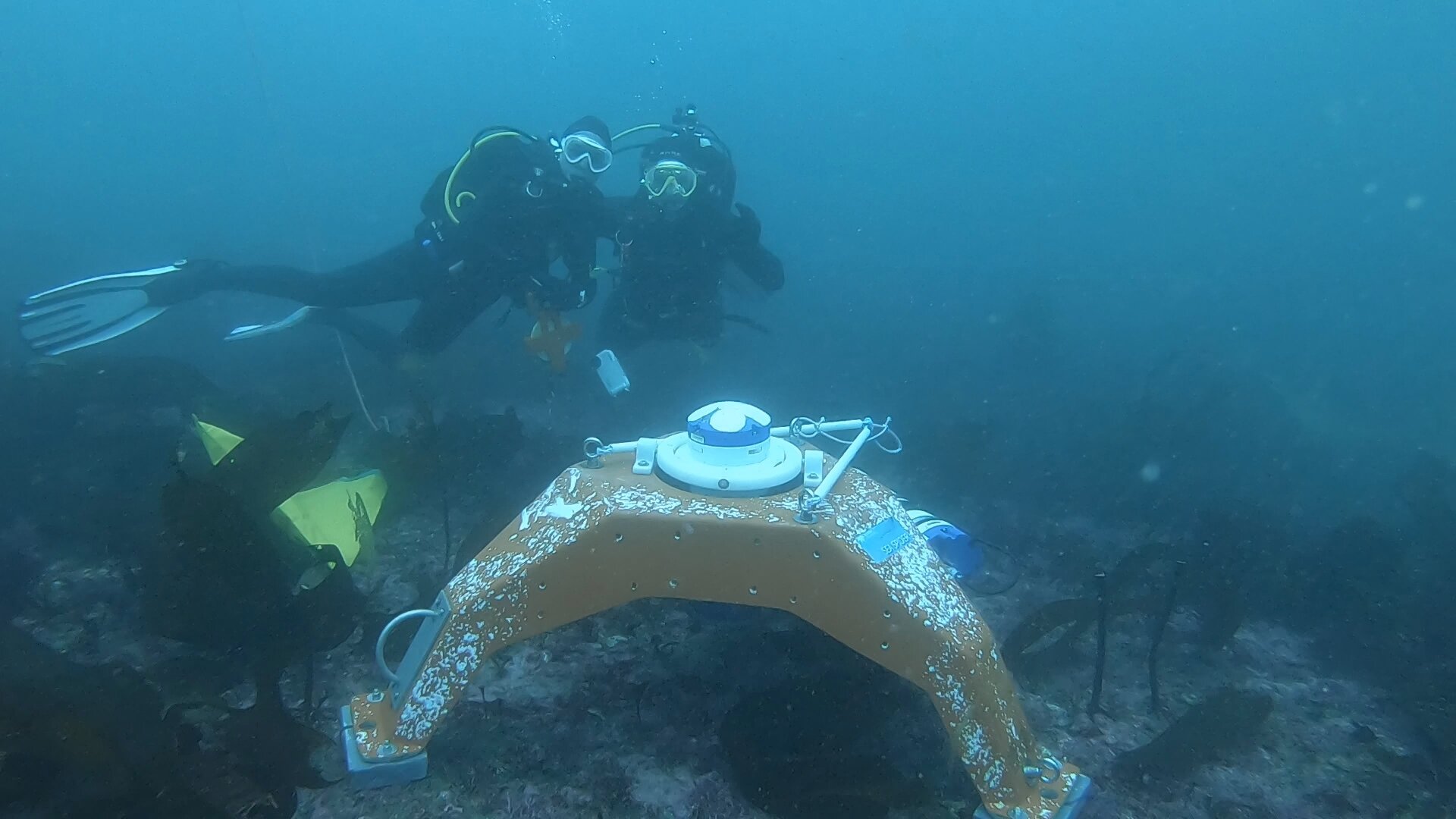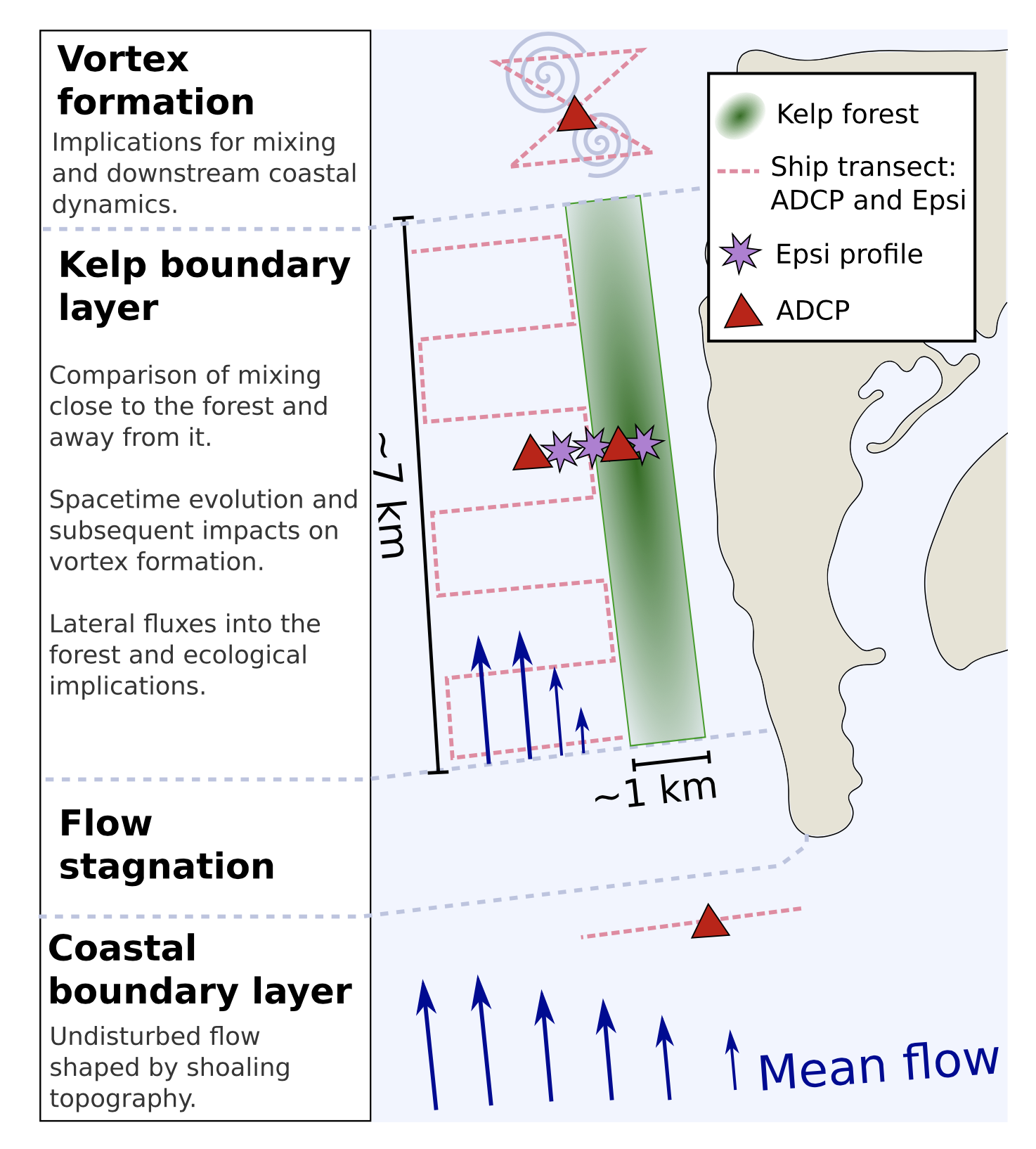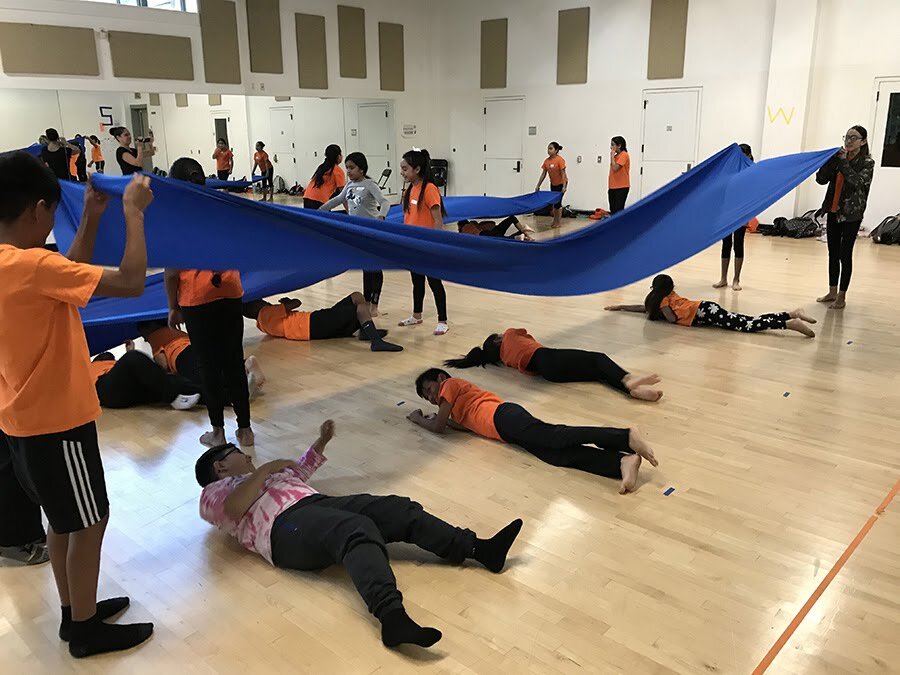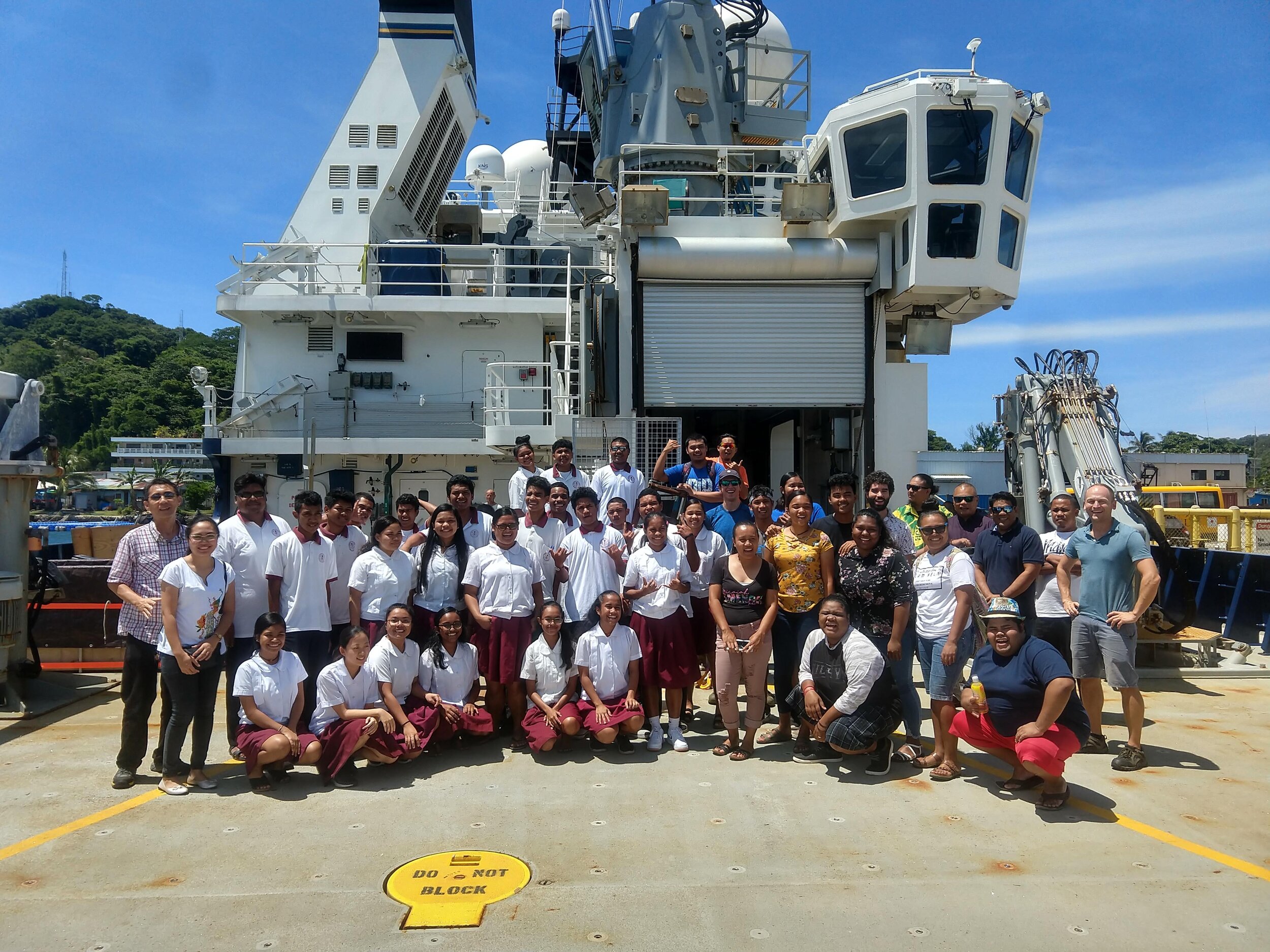Drew Lucas with the Wirewalker wave-powered sensor. Taken on the Scripps Oceanography Research Vessel Robert Gordon Sproul in 2015.
(Erik Jepsen/UC San Diego.)
Researchers seek long-range forecasts of neurotoxin-producing algal blooms
By BRADLEY J. FIKES
OCT. 29, 2019
1 PM
Harmful algae blooms periodically erupt off the West Coast, injuring or killing marine mammals and costing fisheries millions. To better understand and predict these blooms, UC San Diego’s Scripps Institution of Oceanography has been awarded a $4.9 million federal grant.
The five-year grant from the National Oceanic and Atmospheric Administration (NOAA) was announced Monday. It’s intended to shed light on why algae in the genus Pseudo-nitzschia sometimes produce the neurotoxin domoic acid.
During these blooms, harvesting fish and shellfish is prohibited in affected areas, extending to coastal activities such as clam harvesting. In 2015, a particularly large harmful bloom extended off the West Coast from Alaska to Central California.
Existing models predict these blooms three to four days out, said Clarissa Anderson, an expert on harmful algae blooms and one of the four principal scientists on the five-year grant. However, these models don’t get at the cause. They’re largely based on an association between changes in water color and the appearance of these blooms.
“The models we produce are a lot like weather models,” said Anderson, director of Southern California Coastal Ocean Observing System. “They’re a combination of dynamics and statistics, and sometimes that statistical part can break down a little bit.”
A 2018 study including researchers from Scripps and the J. Craig Venter Institute identified the genes involved in domoic acid production. But what activates them in nature is unknown.
Researchers will deploy sensors to monitor the ocean and collect samples, Anderson said.
“The way we will know the mechanism is that we will be looking at the genes and when they’re turned on and when they’re turned off,” she said.
After the data is received from the sensors, Anderson said she’ll be “translating” it into meaningful information, based on her long experience with the algae and domoic acid.
Ultimately, the research may enable seasonal forecasts of algae bloom risks, which fisheries can use to plan, she said. For example, Dungeness crab fisheries have been severely harmed in recent years by the domoic acid problem. They could time their fishing to avoid a contaminated harvest.
Deploying the sensors that will gather the data is the province of another scientist, Andrew J. “Drew” Lucas.
The other two scientists are Andrew Allen, a microbial oceanographer and genomics researcher with Scripps and the J Craig Venter Institute; and Bradley Moore a professor of marine biotechnology and biomedicine at Scripps and Skaggs School of Pharmacy at UC San Diego.
This combination of expertise allows the group to tackle complex questions, Lucas said.
“How is the toxin being produced? What types of organisms are we seeing? What is their genetic expression? What are the patterns of the flow of nutrients related to environmental variability? What are the patterns of temperature, salinity, the physical environmental drivers of the blooms?”
A physical oceanographer, Lucas examines how the ocean’s physical environment varies on a small scale, or in other words, the fluctuating oceanic microclimates.
“The coastal ocean off of California is quite variable on small scales,” Lucas said. “If you ask fishermen, you’ll find out quickly that they go to particular locations and it’ll be a bunch of fish in one place and right next door there’ll be none”
It’s hard to track these small-scale fluctuations with traditional methods such as sampling from ships, Lucas said. So the team will use smaller, autonomous vehicles that repeatedly sample water from one area at various depths.
These vehicles, called Wirewalkers, use wave energy to propel themselves up and down a vertical line enabling water sampling at various depths. This allows creation of finely detailed maps of ocean variability, over space, depth and time, Lucas said.
“The Wirewalker platform was developed here at Scripps,” he said. “We’ll deploy a number of these vehicles with sensors on them. That will allow us to see the chemical characteristics of the ocean, the biological characteristics of the ocean and the physical characteristics of the ocean.”
“In that marriage between the physical environment and the biological response is the key, in my opinion, to forecasting the intensity of these blooms, where they’re going to occur and how toxic they’re going to be,” Lucas said.
On the San Diego Union Tribune News


